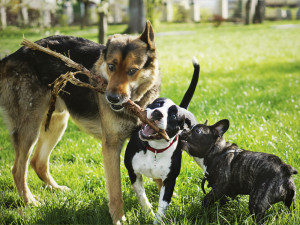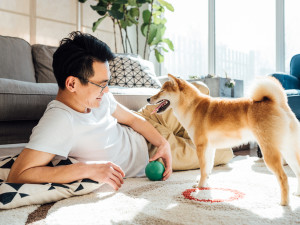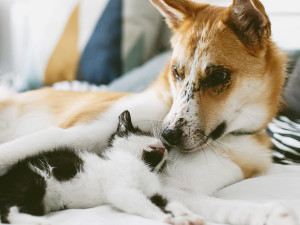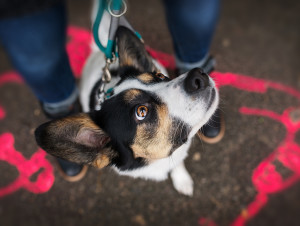Getting a Second Dog?
Use these tips before making the big decision.
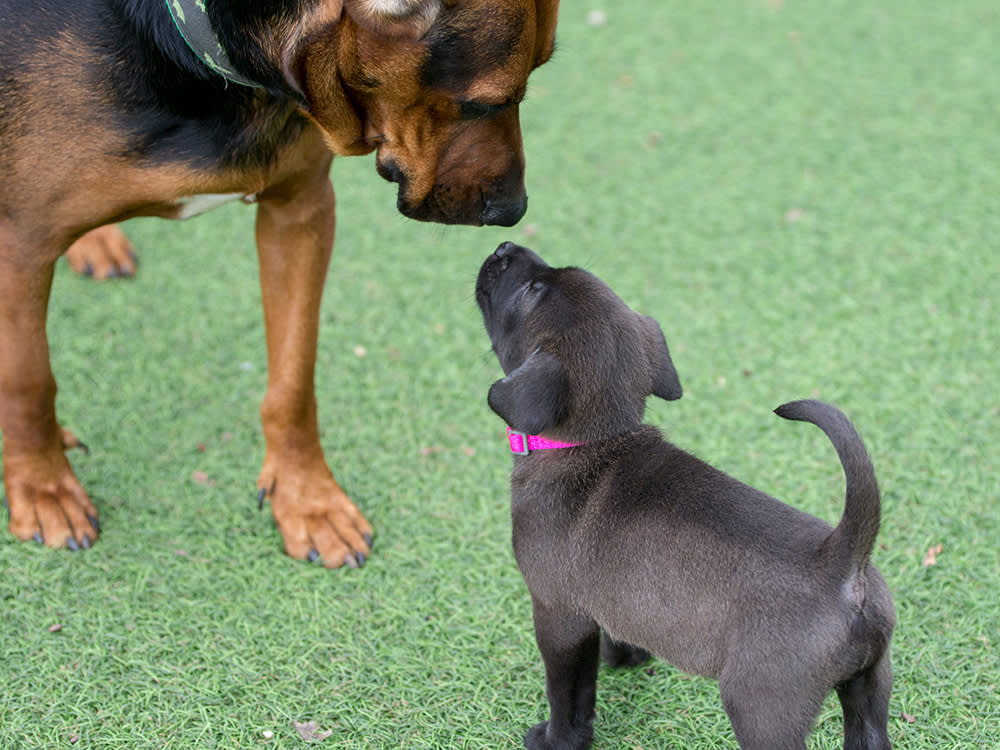
share article

Your pet wants you to read our newsletter. (Then give them a treat.)
Humans, dogs, cats — we all need somebody to lean on. So whether your dog is a constant ball of energy or spends their days curled up on the couch, at some point you might think they could use a friend. There are many great reasons to add another member to your fam (rescuing a pup in need, giving your dog companionship, having another set of those perfect puppy eyesopens in a new tab around…), but there are also some valid reasons not to add a second dog (more vet billsopens in a new tab, more food and toys to buy, more poop to scoop, less individual attention for your firstborn dog…).
In any case, it shouldn’t be a quick decision — there’s a lot to consider when bringing home another member of the family. Use these tips to figure out whether a second dog is a good idea and, if so, how to add them to the mix successfully.
1. Find out how friendly your first dog is
If you don’t already know your dog is the life of the dog parkopens in a new tab, find a friend with an outgoing pup and introduce them in a safely fenced neutral territory. If they hit it off, you’re good to keep looking into adding another dog. If your pup seems snarly or standoffish, though, you may want to reconsider. Keep in mind, though, that if your dog isn’t friendly with other canines but you’re dead-set on adopting another, a traineropens in a new tab or behavior consultant may be able to help your first dog warm up.
2. Pick the right second pup
First, consider your current dog’s temperament. If they’re very assertive, adding another “top dog” could be a recipe for disaster. Look for a dog who defers to your boss dog. If dog number-one is more on the timid side, it’s okay to get a more dominant second dog — but just think about whether it might bug you to see your first dog pushed around by the second.
Next, size matters. If you have a three-pound mini-dog, there are inherent risks in adopting a large-breed dog. Even in play, big dogs can cause serious, sometimes fatal, injuries to toy-size canines. It’s not impossible to have very disparate sizes in a household, but you’ll need to keep a close eye on your dogs.
Finally, take grooming needs and energy levels into account when choosing the right dogopens in a new tab. If your first dog requires daily brushing to stay mat-free, perhaps a shorthaired dog is in order. On the other hand, if you don’t mind the daily styling, a second Old English Sheepdog may be right up your alley. If your current Border Collie mix is an Energizer™ bunny, another active dog might help wear her out — or you could end up with a furry tornado zipping around your house every day.
3. Make the intros
Set up your introductions in that safely fenced neutral territory. This is best done prior to your commitment to adopt the second dog. Have a friend hold one leashed dog at the far side of the area while you enter with the second. Watch body languageopens in a new tab: They may become alert and a little tense or act all waggy and playful — both are acceptable responses. But if one or both dogs exhibit serious aggression like lunging, frenzied barking, snarling, or snapping, stop the meeting and seek professional assistance.
When the dogs notice each other, calmly feed both dog treatsopens in a new tab until each is focusing on the person providing the treats. Then, slow the rate of treats until the dogs glance at each other, then look back at you for more. If both dogs appear happy or at least reasonably relaxed in each other’s presence, drop the leashes while still at a distance and allow them to greet each other. Leash restraint can sometimes cause otherwise compatible dogs to behave aggressivelyopens in a new tab, but leave the leashes on for a few moments so you can safely separate the dogs if necessary. When it’s clear they’re getting along, call them back and unclip the leashes so they can play without becoming entangled (which can also cause a fight!).
At home, introduce them again in your fenced yardopens in a new tab, and, to minimize indoor stress, don’t bring them into the house until they’ve tired themselves out playing.
4. Set rules for success
Installing baby gates and tethers in strategic places can help keep the peace. When dogs are still getting to know each other, separate them when you’re not home. If there are food-bowl or feeding-station issues, feed the dogs far apart, perhaps in separate rooms or crates, to avoid confrontations. Make sure there are enough toys to go around and ample beds located in low-traffic areas.
The more dogs you care for, the more important training becomes. You can survive one ill-mannered dog, but two poorly behaved pups — or several — will make everyone miserable. Your benevolent but firm leadership lends itself to peace in the pack. Plus, it’ll help you and both pups bond.
Pat Miller, CPDT-KA
Pat Miller is a certified dog behavior consultant, dog trainer, author of six books on dog training and behavior, and presents seminars worldwide.
Related articles
![dog and cat snuggling together]() opens in a new tab
opens in a new tabAnimal House: How to Intro a New Dog to Your Other Pets
Without turning your home into a circus.
![Boston terrier being stubborn]() opens in a new tab
opens in a new tabDog Training — DIY or Hire a Pro?
When it’s time to call in reinforcements.
![Dog walker crossing a street with three dogs]() opens in a new tab
opens in a new tabHow to Prepare Your Dog For Daycare and Dog Walkers
Set your pup up for success.
![Dog Completing Tricks During Training In Park]() opens in a new tab
opens in a new tabHow to Make a Comeback After a Dog-Training Fail
Almost all new puppy parents fall at the first hurdle. Here, pro tips on picking yourself up.
![Dog on leash sitting on a colorful street and looking attentive at their pet parent]() opens in a new tab
opens in a new tabYou — Yes, You — Can Get Your Dog to Pay Attention to You
Here are some simple steps to pry your pup away from that one spot in the yard they’re obsessed with.
![]() opens in a new tab
opens in a new tabA Guide to Fostering Pets When You Have Kids
Advice from parents who truly do it all.
